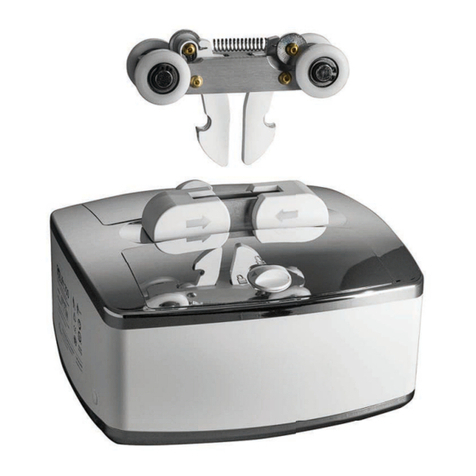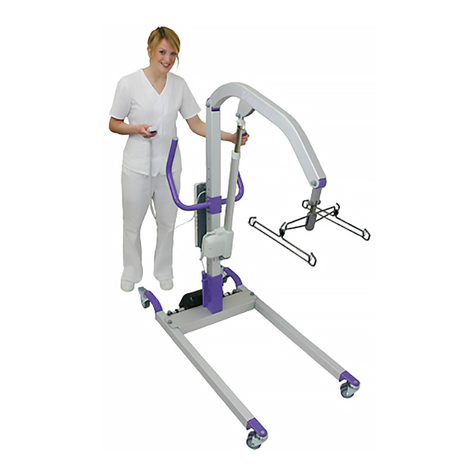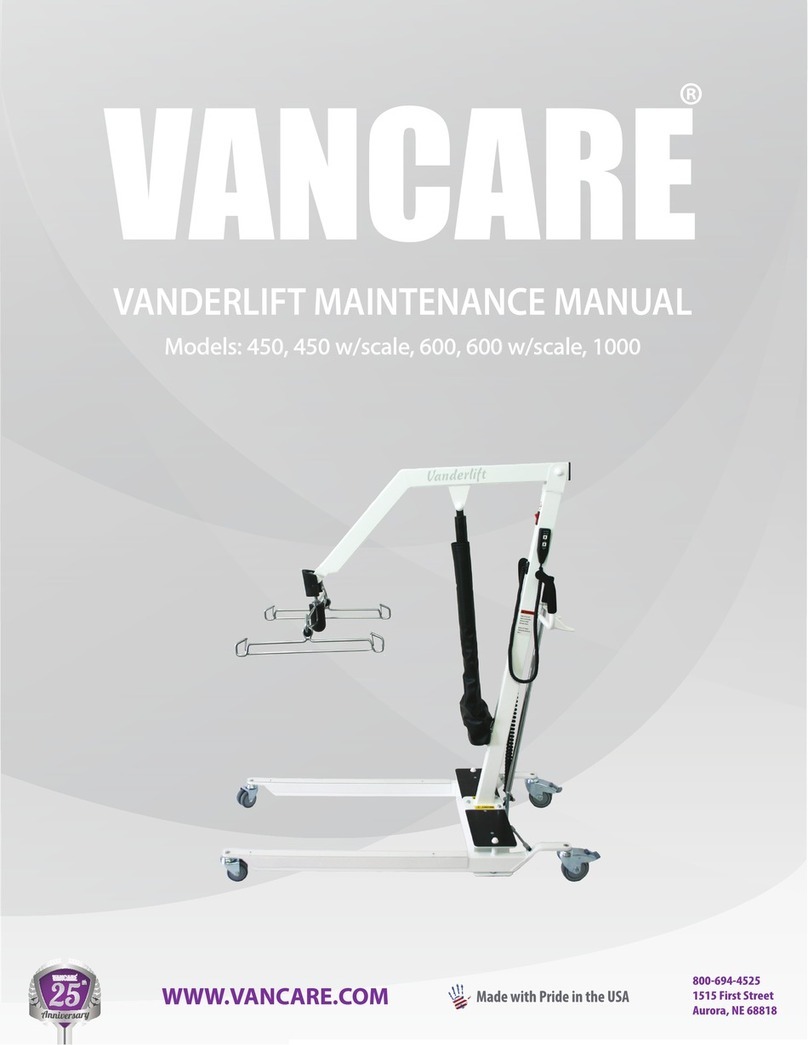
Charging batteries
A tone when using the lift indicating that the batteries need recharging.
Lock the casts when charging the battery.
Make sure the emergency stop button is not pressed in.
Charging procedure:
1. Connect the charger to the charger cable leading from the underside of the control
box.
2. Connect the charger to a power outlet (100-240 V AC).
3. When the charger is connected, the control box lamp indicates a yellow light.
NOTE!
Before the lift is used for the first time, it must be charged for at least 4 hours.
Charge batteries regularly for maximum longevity. We recommend daily charging when
the lift is in daily use.
The emergency stop button must be pulled out during charging.
Handset
Raising/lowering the lift arm
Symbol indicate direction of travel.
Motion stops as soon as the button is released.
Base-width adjustment
Manual base-width adjustment (model EM)
Push down on the respective pedals at the back of
the lift to widen and narrow the base.
LED
indication of
charging
LED
indication
of handset
activation
Button for
electrical
emergency
lowering
Charger
6
Eva450EEL Eva600EEL
Eva450EML
REVISION HISTORY
REV.
DESCRIPTION
DATE
APPROVED
D
E
F
C
1
2
3
4
B
A
3
2
1
5
C
D
4
6
7
8
A
B
SCALE:1:10
DWG. NO.
REV.
NAME
DATE
DRAWN
APPROVED BY
SHEET 1 OF 1
WEIGHT:
COMMENTS:
STATUS:
TITLE
MATERIAL:
SIZE
Released
EVA EEL 450 base
90001288 02
g
2011-05-20
A3
Unless otherwise stated, general
tolerances according to ISO 2768-m
hc-jope
This drawing and any information or descriptive matter set out hereon are the confidential and copyright property of Handicare
and must not be disclosed, loaned, copied or used for manufacturing, tendering or any other purpose without their written permission.
Eva450EEL Eva600EEL
Eva450EML
REVISION HISTORY
REV.
DESCRIPTION
DATE
APPROVED
D
E
F
C
1
2
3
4
B
A
3
2
1
5
C
D
4
6
7
8
A
B
SCALE:1:10
DWG. NO.
REV.
NAME
DATE
DRAWN
APPROVED BY
SHEET 1 OF 1
WEIGHT:
COMMENTS:
STATUS:
TITLE
MATERIAL:
SIZE
Released
EVA EEL 450 base
90001288 02
g
2011-05-20
A3
Unless otherwise stated, general
tolerances according to ISO 2768-m
hc-jope
This drawing and any information or descriptive matter set out hereon are the confidential and copyright property of Handicare
and must not be disclosed, loaned, copied or used for manufacturing, tendering or any other purpose without their written permission.
































